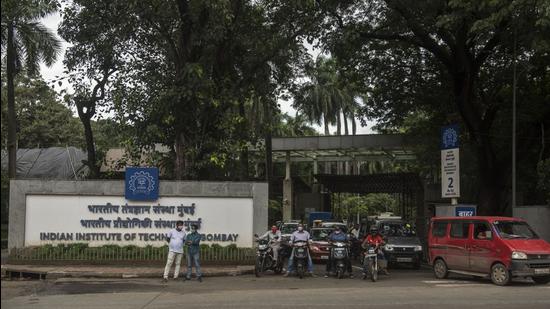Chances of obesity among car users 1.14 times higher than walkers, reveals IIT-B study
Study found that the odds ratio or chances of being obese were the lowest across all age groups for those who preferred walking as their primary means of transport
A person, who prefers travelling by cab or car, is 1.14 times more likely to become obese than one who prefers to walk, finds a recent study by researchers at the Indian Institute of Technology-Bombay (IIT-B).

The study, published in the September volume of the Journal of Health and Transport, found that across all age groups, walking reduces the chances of becoming overweight or obese significantly over those who prefer to take cars, three-wheelers, motorised two-wheelers and public transport.
Gopal Patil, professor and Gajanand Sharma, a PhD student, both from the department of civil engineering at IIT-B, calculated the odds ratio or the statistical association between modes of transport and obesity across four age groups— up to 30 years, 30 to 50 years, 50 to 65 years and 65 and above.
They found that the odds ratio or chances of being obese were the lowest across all age groups for those who preferred walking as their primary means of transport.
“Usage of a walk and public transport not only lead to sustainability in the transportation system but also helps promote the health wellbeing of the society. Thus the policymakers need to invest in these active modes of transportation and promote their usage. In India, leisure-time physical activities are relatively less, compared to the developed nations. Thus, commuters should use the active modes of transportation whenever feasible. This helps in increasing their physical activity level and enhances their health wellbeing,” said Patil.
The researchers collected data from 5,447 households in Navi Mumbai, of which they analysed data for 4,253 respondents. Nearly 40% of the respondents fell in the category of overweight/obesity. The data set observed an equal proportion of low-income and middle-income groups. Almost 53% of the respondents did not own a car and about 32% used motorised two-wheelers as the primary mode of travel. Only 6% used three-wheelers as the primary mode of transport. For 14.1% of the respondents, walking was the primary travel mode.
Overweight/obesity was determined using the body mass index (BMI) value of respondents. The World Health Organisation defines obesity as a BMI over 25.
In July, a WHO study revealed that worldwide obesity had tripled since 1975. In 2019, an estimated 38.2 million children under the age of five years were overweight or obese, WHO said. “Once considered a high-income country problem, overweight and obesity are now on the rise in low and middle-income countries, particularly in urban settings,” WHO had said.
Shankar Das, professor and dean, School of Health Systems Studies at the Tata Institute of Social Sciences, Mumbai, who was not a part of the study said, “Obesity is one of the rising public health issues as obesity and excess weight increases the risk of severe illness and compounds the existing health concerns. The trend analysis of recent data confirms that the prevalence of overweight and obesity in India is climbing rapidly than the world average. However, this significant issue does not find an adequate place in our health and nutrition policies.”
Apart from travel patterns, researchers also analysed the socio-economic characteristics of the respondent. Monthly household income, education level, and age are used as variables in the analysis. They also measured the built environment within walking proximity and traffic analysis zone.
“The study concludes that socio-economic characteristics such as income, education, and age influence BMI levels in society. Persons with high income and higher education levels have better access to higher economic, social, and environmental opportunities (e.g. gym, park, sports facilities, proper diet, awareness, and neighbourhood), making them less likely to become obese/overweight. In general, it is found that the chances of getting overweight/obese increase with age for all socio-economic groups. The built environment around an individual’s place of residence plays a crucial role in physical wellbeing parameters. The urban forms with appropriate population density coupled with a high walkable environment can reduce overweight/obesity chances. A neighbourhood with mixed land use can help reduce overweight/obesity,” Patil said.
Interestingly, as the travel time by walk increases by 10 minutes, the change in the probability of being overweight/obese decreases for all age groups. “This shows an interesting pattern and can lead us to conclude that, as age increases, the odds of being overweight/obese are dominated by walking trips. This means that even though age has an increasing impact on overweight/obesity, this increasing effect can be controlled by investing more time on walking trips,” the study said.
“I believe the prevalence and risk of obesity in India can be explained by socio-demographic factors such as gender, age, profession, geographical environment, socio-economic status, etc. The prevention and control of obesity-related diseases are critical public health and developmental challenges due to diminished economic productivity, rising healthcare expenditures and financial risks. Additionally, the coronavirus crisis has made the rift alarmingly evident in the country’s health system. The spread of adult and childhood obesity could increase the burden on our already burdened health care infrastructure,” said Das.
“In recent times most Mumbaiites are familiar with healthy lifestyles, but changing behaviour is complicated and complex, not a simple and linear process because it requires somebody to disrupt a regular and habitual behaviour. However, we need a robust health action plan under effective leadership and evidence-based action on prevention, control, and interventions. Multiple surveillance approaches are necessary to collect comprehensive information for effective obesity-related diseases surveillance and cost-effective interventions. In addition, at the health systems and community level robust interventions may be launched with a special focus on systematic behaviour change communication, healthy lifestyle awareness, individual risk assessment/counselling and accessible NCD clinics may go a long way to prevent and control the burgeoning obesity-related health problems,” Das said.



